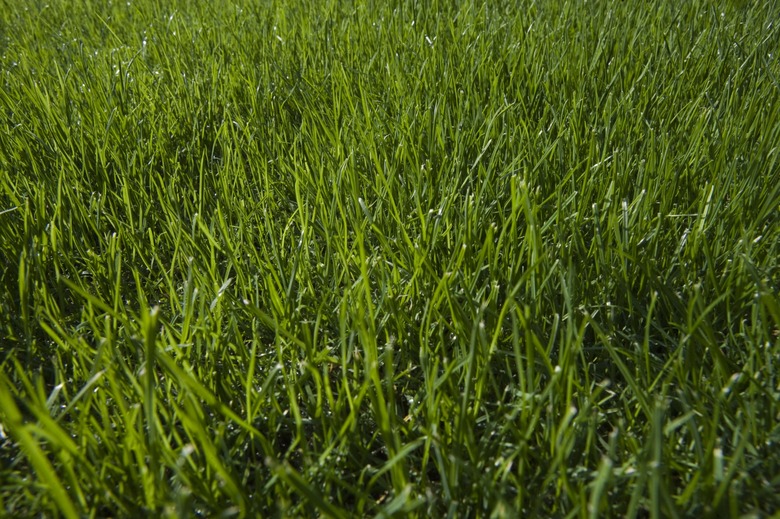How Much Topsoil Is Needed To Grow Good Grass?
Whether you start a lawn from seeds or use a vegetative planting method such as sod or plugs, the soil conditions largely determine how well the grass grows. Seeds, sod and plugs all require at least 4 to 6 inches of good topsoil for optimal health and growth. Whether or not the topsoil should be amended depends on the soil conditions and can be determined by a soil test.
Tip
You need at least 4 to 6 inches of nutrient-rich topsoil to grow good grass.
Prepare the Site
Before adding topsoil, grading the lawn ensures water will flow away from buildings. A slope of 1 to 4 percent is ideal. Large grading changes require the use of a tractor or bulldozer, but small changes such as filling in a few low spots can be done using a shovel, wheelbarrow and rake.
After grading, spread a 4- to 6-inch-thick layer of good-quality topsoil over the entire area. That measurement refers to the depth of topsoil after it has been firmed and settled.
Amend the Soil
Sandy soils and clay soils benefit from the addition of organic matter. It helps sandy soils hold water so they require less irrigation, and it improves drainage and lessens soil compaction in clay soils. Sphagnum peat moss and compost are organic matter.
Spread a 1- to 2-inch-thick layer of either type of organic matter over the 4 to 6 inches of soil, and then work the organic matter into the soil by using a rototiller. A soil test performed by a professional soil-testing laboratory or your local cooperative extension service can indicate whether the soil needs other additives, such as lime, potassium and phosphorus.
Seed the Lawn
After the topsoil is prepared, the most cost-effective way to establish a lawn is by putting down grass seeds. The best time to seed cool-season grasses is in late August or September, and warm-season grasses grow best when seeded in May, June or July, depending on your region and the specific type of grass. Ensure even seed distribution by using a lawn spreader to apply one-half of the seeds in one direction and the other one-half in the opposite direction.
Using a hand rake, lightly work the seeds into the top 1/4 inch of soil. After the lawn surface has been rolled, the surface should be mulched with 1 bale of straw per 1,000 square feet. Water the site lightly several times each day, or often enough to keep the soil moist for the first few weeks until the seeds have germinated and grass grows.
Plant Your Sod
Sod is a more expensive way than seeds to establish a lawn, but it is also faster. Another reason to use sod is to grow warm-season grasses for which seeds are not available. Water the topsoil before laying sod, and spray the soil and sod with water as needed to keep them from drying out while you put the sod in place.
Lay strips of sod in staggered rows, with the strips firmly against each other. Using sod that was cut into 2- to 4-inch plugs saves money. Plant the plugs 6 to 12 inches apart; the grass eventually will grow in the spaces between the plugs. After planting sod strips or plugs, roll the lawn, and water it regularly to keep the soil moist until the grass roots firmly, which takes about 10 days.
